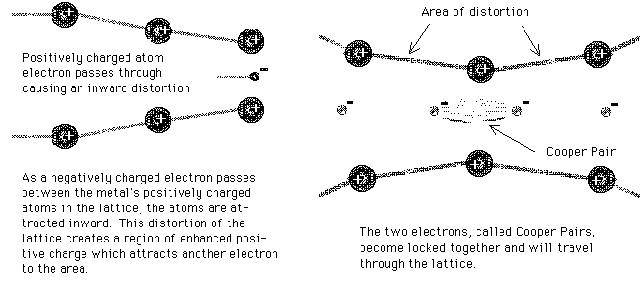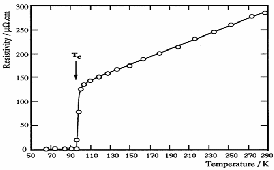If mercury is cooled below 4.1 K, it loses all electric resistance. The fact that the resistance is zero has been demonstrated by sustaining currents in superconducting lead rings for many years with no measurable reduction and no applied voltage.
As shown below, superconductivity occurs when electrons in the material pair up to form 'Cooper pairs'.

Many metals exhibit superconductivity if cooled far enough, but to cool to temperatures at which superconductivity appears takes a lot of energy and costs a lot of money. A new generation of ceramic high temperature superconductors promise eventually maybe superconductivity at room temperature – the graph below shows superconductivity appearing at a temperature of just over 90 degrees K.
